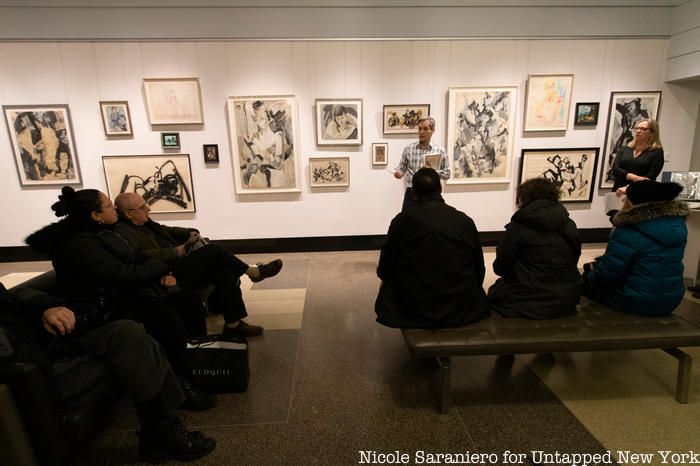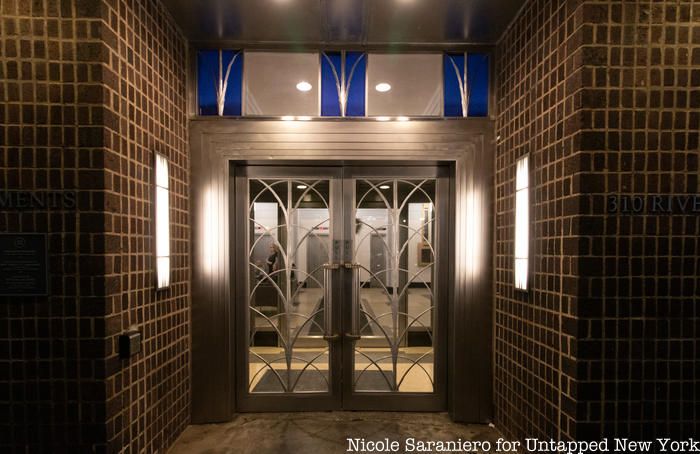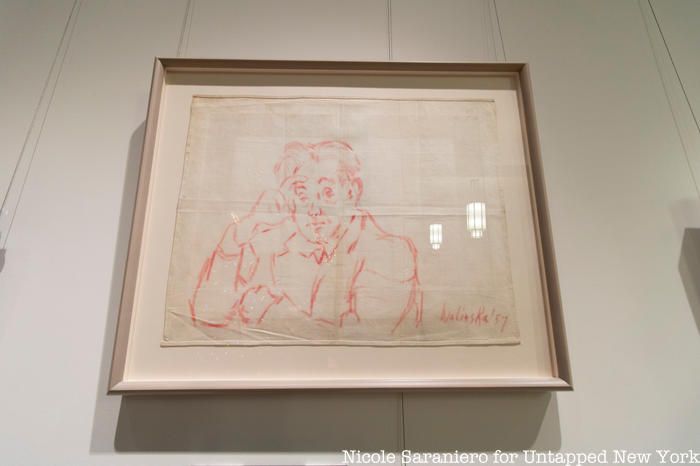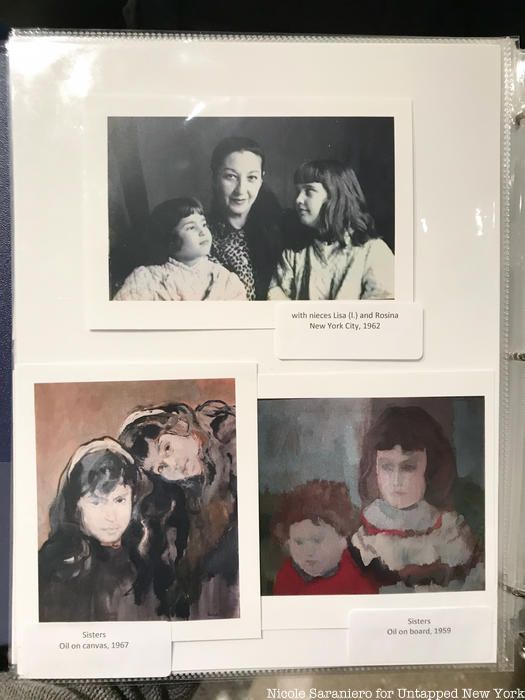Last-Minute NYC Holiday Gift Guide 🎁
We’ve created a holiday gift guide with presents for the intrepid New Yorker that should arrive just in time—


Offices and a pilates studio now exist where works of early 20th century art once hung inside the Master Apartments, but the residents of this Art Deco tower are keeping the artistic heritage of the building alive. The Master Apartments were once home to the Riverside Museum. While the Museum closed in the 1970s and the building was eventually turned into a co-op, the residents, many of whom are artists, continue to pay homage to the building’s history with a rotating art gallery in the lobby. Untapped New York Insiders recently got to visit for a tour of the current exhibit, Anna Walinska: Return to Riverside, and to see the physical remnants of former museum.

The Master Apartments were built in 1928-1929 to house the Master Institute of the United Arts. The Institute was founded by Russian artist Nicholas Roerich and his patrons, Louis and Nettie Horch, in 1921. The Institute was originally located on West 54th Street. Horch bought the lot at 310 Riverside Drive to build a new home for the Institute. A mansion on the property was torn down in 1928 to make way for a towering new structure.

103rd Street Entrance
Designed by architect Harvey Wiley Corbet, the new tower at 310 Riverside was an Art Deco masterpiece. It is purportedly the first building in New York City to have corner windows, and remains the tallest residential building on Riverside Drive. Corbet’s building contains all the hallmarks of a great Art Deco structure, including rising setbacks, multi-color, patterned brickwork, and an ornate cap. The first three floors of the building were dedicated solely to the arts. Inside, you would find the Roerich Museum, exhibition halls, conference rooms, and two libraries. Above the Institute, there were twenty-four floors of income producing apartments. The apartments were mostly small studios with reasonable rents, designed to attract artists.

In the 1930s, Roerich and the Horches had a falling out. By 1938 all of Roerich’s work was removed from the building and the museum was renamed the Riverside Museum. Instead of work by Roerich, the museum showed contemporary American and foreign art and sculpture. The museum remained in operation through 1971, showing many emerging artists of the time including Louise Nevelson, Milton Avery, and Jasper Johns. Eleanor Roosevelt even gave a speech at the museum in 1932. The permanent collection of art was moved to the Rose Art Museum at Brandeis University. In 1988, the building was turned into a co-op.

The Riverside Drive entrance, which was the original entrance to the museum, is no longer in use, however there are still indicators of the museum’s former presence. Above the double height entrance, with stunning blue Art Deco glass designs, you will still see the silver lettered sign for the Riverside Museum. Inside, there remains a grand staircase. Rosina Rubin, the niece of artist Anna Walinska, recounted a touching story of her aunt and Louise Nevelson standing on the staircase reflecting on their work being shown at the museum. Hanging at the center of the staircase now is a replica of a Roerich painting, Treasure of the Angels. This 1904 painting originally hung in this location when it was the Roerich Museum. The original is now in Konstantinovsky Palace in St. Petersburg, Russia. Roerich’s art can be seen in New York City at the Nicholas Roerich Museum on West 107th Street.

A photo of what the residential lobby used to look like against the current lobby
Six years ago, residents Jan Fort and Michael Alicia (who is an Untapped New York Insider!) teamed up to start the Master Gallery, an exhibition space in the building’s renovated lobby. The gallery not only pays homage to the building’s artistic roots, but also promotes the work of the many artists who still reside at the Master Apartments. The gallery shows four exhibitions a year. The current exhibition, Anna Walinska: Return to Riverside, displays the work of abstract expressionist painter Anna Walinska. The art on view, twenty-two years after Walinska’s passing, was made during her sixteen year stretch as an artist-in-residence at the Riverside Museum from 1955 to 1971. On our visit, we got to meet Ilana Lobet. She runs a custom framing company out of a studio in the Master and she framed all of Walinska’s artwork that is on display.

On our Untapped New York Insider visit, Rosina Rubin, Anna Walinska’s niece, told us the history of every piece on display. As a Depression era artist, Walinska often worked on paper rather than the more expensive medium of canvas, and would paint and draw on anything she could find. One of the most interesting pieces on display is a portrait done on a napkin with lipstick. Walinska had a long and prolific career and experimented with many mediums including spray paint and collage, in addition to painting. Rosina and her sister were often Walinska’s subjects, which Rubin remembers fondly. The artwork is enhanced by a scrapbook Rubin created with photographs of Walinska and programs from other exhibitions of her work. The close relationship they shared is exemplified in the way Rubin continues to carry on her aunt’s legacy.

Anna Walinska: Return to the Riverside will remain on view through January 24, 2020. Check out more photos from our visit to the Master Apartments in the gallery above and become a member today to join our next adventure!
Next, check out The Lost Grand Central School of Art, As Featured in The Masterpiece
Subscribe to our newsletter